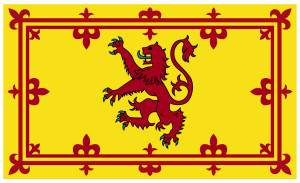Most people appreciate that the brain’s reaction to certain stimulus is incredibly fast, yet the fastest of all reactions is the brain’s image identification time. Once it was thought that the brain could recall and loosely describe an image after seeing it for just 100 milliseconds. Yet the world leading students at Massachusetts Institute of Technology (MIT) have developed a faster display method and managed to prove that the brain can recall and begin to react after a mere 13 milliseconds. “The fact that you can do that at these high speeds indicates to us that what vision does is find concepts. That’s what the brain is doing all day long — trying to understand what we’re looking at,” says Mary Potter, an MIT professor of brain and cognitive sciences and senior author of the study.
It is almost impossible to appreciate just how fast 13 milliseconds is but to put it simply, when the candidates in the study were quizzed and asked to describe what they had seen, they could not even remember seeing anything, although they could tell the researcher what the image was. To them is was almost like an experiment in ESP (extra sensory perception) and to an extent they were right.
What is almost as interesting is the way people react. Describing the images afterwards many people were able to recall vast amounts of detail and associate an emotion to the pictures, be it fear, joy, fun, hunger, or any other of the human gambit of emotions.
However in real life, your eyes are bombarded with a massive variety of images, constantly. So it is almost unsurprising that people invest heavily in clean, crisp logos and identities, especially when they are used on moving media like cars or lorries.
The brain picks up these images and stores them in an emotion laden information bank. Therefore, when people see an image of the famous Golden Arches of McDonalds for example, they may suddenly feel hungry, even if they do not like McDonalds food specifically, the brain logs the image which the mind may not even recall having actually “seen” and associates it with food.
The brain is equally good at filling in blanks or decoding information from known image association, using facts or even emotions to “read” and make sense of what it has seen;
S1M1L4RLY, Y0UR M1ND 15 R34D1NG 7H15 4U70M471C4LLY W17H0U7 3V3N 7H1NK1NG 4B0U7 17.
You may find this article interesting: http://www.mrc-cbu.cam.ac.uk/people/matt-davis/cmabridge/
However the cleaner, crisper and clearer a logo is, the easier and faster it is to recall. Compare these two national flags. Which nation is represented by each?


Actually it is a trick question because they are both Scottish Flags, one is the Heraldic Lion Rampant traditional, and the other is the St Andrews. Yet unless you support Scottish Sports then it is less likely that you will instantly recall the more complex lion.
To see some of our crisp and dynamic designs, see our portfolio or call us for more information about designing your perfect logo.
